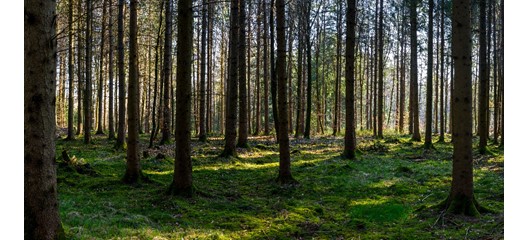Forest mitigation banks are an off-site method commonly used to meet certain environmental requirements under the Maryland Forest Conservation Act (the “Act”). A recent Office of the Attorney General opinion established that off-site existing forests encumbered with a protective easement do not qualify as forest mitigation banks. This strict interpretation of forest mitigation banks has the potential to have significant effect on development moving forward, particularly for developers in heavily urbanized jurisdictions. House Bill 991 was recently introduced in an effort to reverse the OAG’s published opinion.
Background on Forest Conservation Act and OAG’s Opinion
Under the Maryland Forest Conservation Act (the “Act”), developers, or applicants, developing more than one acre of land are required to submit a “Forest Conservation Plan” detailing measures taken to offset any loss of forest as a result of development. While on-site forest retention is preferred under the Act, developers may pursue off-site methods of forest retention if on-site retention is not viable – one of the off-site methods being the use of forest mitigation banks. Developers then have the option of purchasing credits from these banks to satisfy on-site retention requirements. Jurisdictions throughout the state of Maryland have interpreted the qualifications of a mitigation bank differently, creating conflicting requirements for development throughout the state. In Montgomery County and Prince George’s County for example, forest mitigation banks included existing forested lands protected by restrictive easements. In other jurisdictions, such as Anne Arundel County, forest mitigation banks only included restored or created forests.
In response to these conflicting interpretations of the law, the Office of the Attorney General (OAG) issued an opinion establishing that off-site existing forests encumbered with a protective easement did not qualify as forest mitigation banks. The OAG’s strict interpretation of forest mitigation banks already has created hardships for developers, particularly those in heavily urbanized jurisdictions. Soon after the OAG released its opinion, the Montgomery County Planning Board suspended the issuance of credits from mitigation banks established with existing forests. As a result, there essentially are no remaining credits for purchase in Montgomery County. Only a limited supply of forestation credits exists in Prince George’s County, although Planning Board officials believe that this supply will deplete in a few short months. Developers have turned to fee-in-lieu payments as an alternative to purchasing credits from these banks; however, officials from the Montgomery County and Prince George’s County Planning Departments noted that fee-in-lieu payments were designed to function as “last resorts.” Without these monetary incentives to preserve existing forests, planning departments have noted that property owners will have less of an incentive to preserve these forests, and instead may sell these forests to developers, undercutting the purpose of the Forest Conservation Act.
House Bill 991
House Bill 991 is expected to address the OAG’s opinion and eliminate much of the consequences created by the OAG’s strict interpretation of the Forest Conservation Act. The Bill would expand the definition of “Forest Mitigation Banking” to include “the intentional restoration, creation, or qualified conservation of forests undertaken expressly for the purpose of providing credits for afforestation or reforestation requirements with enhanced environmental benefits from future activities. Qualified conservation would include ‘all or part of an existing forest that is encumbered in perpetuity by a restrictive easement, covenant, or another similar mechanism recorded in the county land records to preserve its character as a forest.’” Essentially, the Bill would permit the use of a forest mitigation bank that preserves and protects existing forests.
HB 991 has faced criticism from environmental groups such as The Sierra Club and the League of Conservation Voters, who cite concern that the bill may decrease tree canopy in Maryland. In response to criticism from these environmental groups, the Bill underwent several amendments to alleviate these concerns. One of the more significant amendments limited the use of qualified preservation completed in a forest mitigation bank, stating that “the afforestation or reforestation credit granted may not exceed 50% of the forest area encumbered in perpetuity.” The amendments would also require the Harry R. Hughes Center for Agro-Ecology, in consultation with the Department of Natural Resources, the Department of the Environment, the Department of Planning, the Department of Agriculture, and the Chesapeake Bay Program to conduct a technical study to review changes in forest cover and tree canopy in the State. The Bill, with amendments, recently passed in the House and is awaiting a vote in the Senate. HB 991, if passed, would go into effect October 1, 2021.
Should you have any questions or would like more information about how this may impact your property/development, please feel free to contact any of our land use attorneys.

